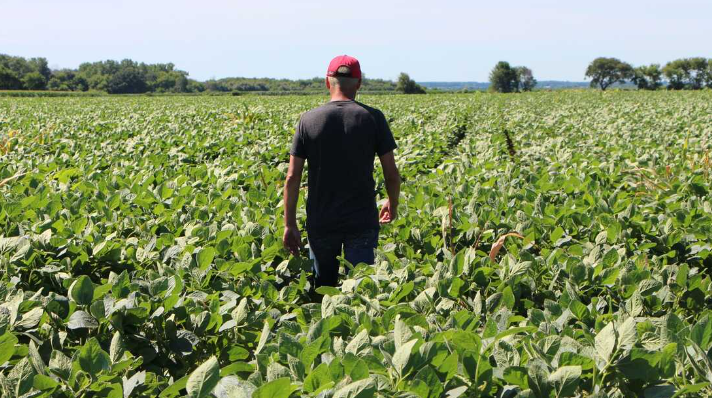
For many Ohio farmers, the term “tariff” brings an immediate reminder of 2018, when a trade dispute with China upended the agricultural industry. That year, China imposed a retaliatory 25% tariff on U.S. soybeans, effectively shutting out Ohio’s largest buyer overnight.
The market never fully recovered, as China turned to alternative suppliers for soybeans. “Right now, it’s cheaper for them to buy in South America, so that’s what they’re doing. They’re buying in South America, they’re bypassing us,” said Chuck Sayre, a farmer from Portage County. “They have been doing that for two, three years, so we haven’t seen the results of China buying our product right now.”
Sayre, who first spoke with reporters during the 2018 trade war, has since navigated additional challenges, including the COVID-19 pandemic and the war in Ukraine. Now, he finds himself facing tariffs once again. “This round of tariffs is really going to hurt,” he said, referring to the U.S. levies on goods from China, Mexico, and Canada, which have triggered retaliatory tariffs in response.
While the soybean market remains stable domestically, Sayre, like many other farmers, has diversified his crops by planting more corn—a commodity now feeling the effects of trade tensions. “[The] corn market is pretty good right now, except the tariffs now are affecting Mexico, and Mexico takes a bunch of our corn. So this last week, our corn markets have really taken a hit because of these tariffs.”
The timing is particularly difficult, as Ohio farmers have already experienced a significant decline in net income. According to the Ohio Farm Bureau, farm income has dropped by approximately 30% over the past three years. “So farmers are already reeling from what they’re seeing with commodity prices,” said Ty Higgins of the Ohio Farm Bureau. “We saw corn prices in 2024 that equaled that of 1974, so the picture income-wise on the farm has not been pretty for a while, and this certainly doesn’t do it any favors.”
At the same time, operating costs continue to rise. Sayre noted that expenses for equipment, repairs, fertilizer, and even property taxes have soared. “Just this past few weeks we’ve got our property taxes in. They’ve tripled. Our property taxes have tripled,” he emphasized.
However, time remains a crucial factor in how these tariffs will ultimately impact farmers. The upcoming planting season, set to begin in late April and early May, will not yield crops for harvest until the fall, with some of the product reaching the market next year. Farmers are hoping that by then, trade policies may shift.
On Wednesday, Commerce Secretary Howard Lutnick suggested that President Trump may be open to adjustments. “I think there’ll be some movement that will not eliminate the tariffs,” Lutnick said, “but it might modify the tariff somewhat.”
Looking ahead, Sayre remains cautiously optimistic. He plans to dedicate a third of his fields to corn, with the rest primarily planted with soybeans and some wheat. As he prepares for the season, he relies on the resilience that farming demands. “We’re going to get through it,” he said. “It’s going to be painful here for a while, but the light is at the end of the tunnel, you know. We’ll get better prices. We saw it last time and we’re going to see it again.”